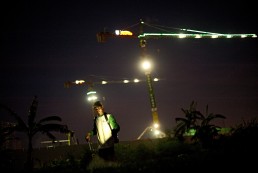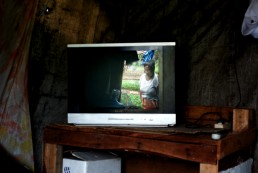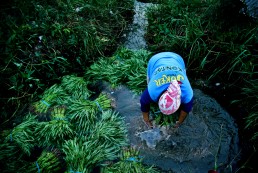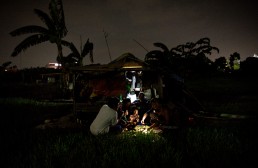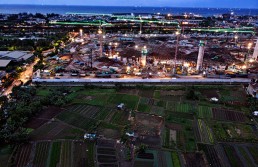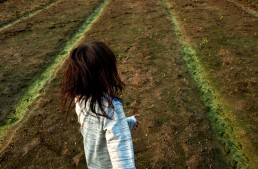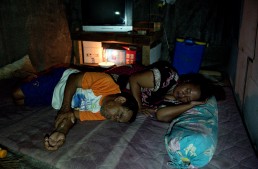Land of My Land
Land of My Land
Riska Munawarah (Freelance Photojournalist, Aceh)
Until the beginning of 2020, the construction piles of Jakarta International Stadium remain to stand in front of the farmers’ huts in Sunter Agung area, North Jakarta.
The farm laid next to the construction project is used to be idle land which then utilized by farmers for farming.
“Before coming here, I farmed in Kampung Bayam which now has became construction project,” said Surkha, a farmer who initiate the farming in the area. He has been in Jakarta for 10 years.
Farming in the capital city is never an easy thing to do. Land problems are increasingly haunting the farmers. The changes in allotment and land acquisition has become more problematic. The farming area in Jakarta continues to shrink every year. In 2014-2018, vegetable production in this city continued to decrease. This is also due to the decreasing area of vegetable land. Based on Badan Pusat Statistik data in 2015, the area of fields in Jakarta reached 97.4 thousand hectares, shrinking in the following year to 34.4 thousand hectares, and in 2017 the remaining 18.6 thousand hectares.
Urban farming is also often carried out on unused land (idle land). The existence of this idle land often raises conflicts between individuals regarding the ownership as well as conflict with city’s spatial function initiated by logal government. These landless farmers have to find solution to remain farming in Jakarta. They move around to find idle land to farm.
Sukidjo(60) for instance, he chose to join forces Surkha and other farmers to farming after his previous land has been turned into construction project. There are several vegetable commodities grown by the farmers, including water spinach, mustard greens, spinach, basil and bitter melon. They sell it to a nearby market.
On the land that Surkha and Sukidjo were working on, now there are dozens of farmers’ huts. They settled and lived there. Farmers often work together and help each other. Surkha, who is no longer able to lift vegetables, is helped by his neighbor to bring the crops to the collectors.
The farmers, who mostly come from Indramayu, seem to unite against the land conflicts that have occurred.
The availability of land which is increasingly limited is of course a major obstacle in addition to the income earned.

